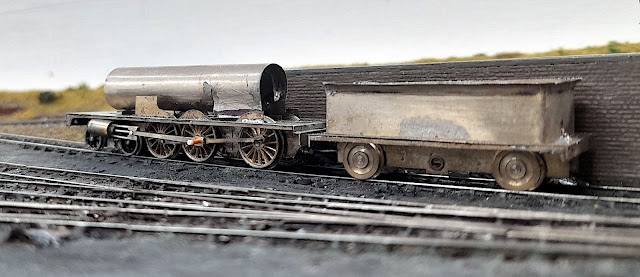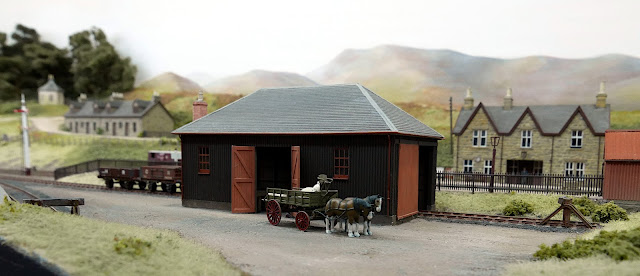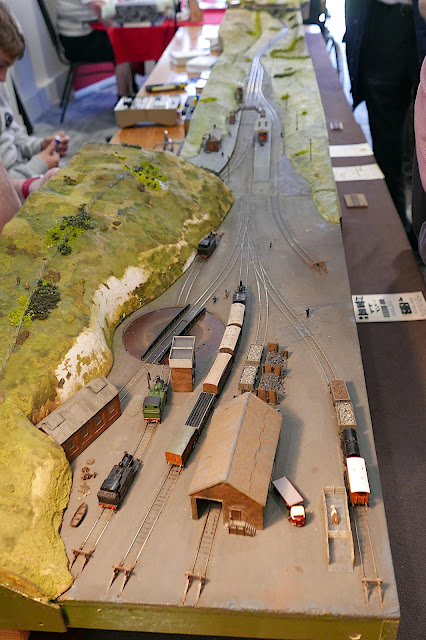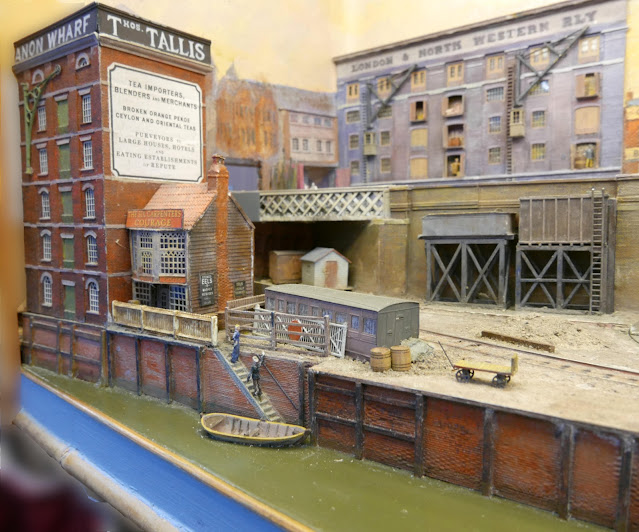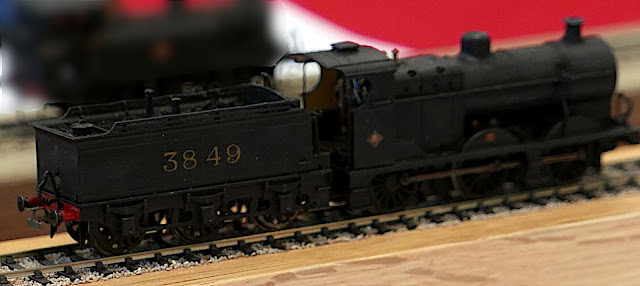Six Forth and Clyde members (Alisdair, Jim, Simon, Graham, Chris and Stephen) made the journey south to Derby to sample the local waters and, the following day, to visit the 2mmSA 2025 Expo at the former LMS training school. The journey south was memorable for Simon's five-hour stream of stories, all different from stories he's previously told, and all delivered without pausing for food, drink, or indeed breath. How did his parents get him down to sleep when he was a bairn? But at last we arrived at Derby and detrained, all except Jim's fancy waistcoat, which continued to Plymouth without him. Hopefully they'll be reunited soon.
At Derby we set off to meet other finescale revellers at the Brunswick Inn, settling down happily at the tables outside in the unaccustomed warmth of the southern evening. No-one else came. When it was time to leave, we discovered the Sassenachs were inside the pub, having decided it was not summer yet and too chilly for conversation. Cultural differences were then put to one side over a curry at the Shalimar Gold, and we were ready for the next day's entertainment.
The Expo had seven layouts this year, as well as demonstrations, the 2mmSA Central Shop, the members' bring-and-buy, and the competition entries.
Andrew Bartlett had brought his "Blueball Summit" 1:148 N-finescale layout, blue diesels in ex-Great Western territory. It was full of sensitively-modelled detail, all to a consistent standard and handled with restraint. It ran faultlessly, and was a convincing "railway in the landscape". A great advert for FineN.
Anthony Yeates had "Corrieshalloch" in 2FS, capturing the atmosphere of the old Highland Railway to perfection.
New cassettes for the fiddle sidings were in evidence, with laser-cut
plywood sides from Anthony's own patterns. They haven't been
trouble-free: although the deck is made from two layers of ply, there is
still a tendency to bow up in the middle; and the reverse curve to
spread the tracks at the backscene turned out to be too tight for steam
loco wheelbases and will need to be laid out more generously.
The Banking Tank was built by the late Neil Ballantine. Anthony re-liveried it to Highland green
The Small Ben is mostly complete and is awaiting painting.
The Kent and Essex area group had Lighterman's Yard on display. It never fails to fascinate, with its effective use of different levels to lift the trains above the scenery, its dense buildings, and the track layout allowing two pilot engines to shunt at the same time while trip freights come and go. A real pleasure to watch.
Steve Nichols was there with Parkend. The functioning tipper lorry was new to me and looked good, introducing some activity at an otherwise relatively featureless part of the layout.
An unexpected treat was the (probably) earliest surviving 2mm finescale layout, "Rydes Vale", exhibited in the early 1960s and lovingly restored over the last four years by Simon Humphries. I believe this was the first time the complete restored layout has been exhibited along with all the original locomotives, some of which are considerably older than the layout itself if I recall correctly. They ran very well.
In complete contrast, Andrew Gibson's "Swinton"reminded us just how much space is required for even a small modern station when modelled to scale.
David Eveleigh's "Yuen Long Street", which featured recently in the 2mmSA magazine, was enjoyable to see in real life. I particularly liked the level crossing gates with road traffic backed up waiting to cross.
The demonstration stands were busy dealing with visitors' questions, one of the benefits of the informal Expo format. Nick "Gear Goblin" Mitchell was showing off the gear hobbing machine designed and manufactured by Association members Julia Adams and Alan Smith.
Mike Raithby was explaining the principles behind effective backscenes. He made it look so easy... and he had a series of very informative panels to back it up.
Tony Heywood, from the Grampian area group was there to talk about their Dunallander project - and it was rumoured that the layout may appear at the 2026 Expo, which could explain why organiser Edward Sissling is deep in conversation with him. At the next table, Chris Bentley was discussing potential new Association products.
Mark Henshaw's demo table also had a stream of visitors.
The various competitions drew many entries. Mick Simpson was busy photographing them all under much better lighting conditions (and with a much better camera) so these shots are simply to give a flavour.
Nick Mitchell's Hunslet shunter "Beatrice", below, won the prestigious Groves Trophy. Judge for the day and P4 modeller, Steve Duckworth (who you can see squinting at the Class 17 in one of the photos above) confided, after the presentations, that one of the features which clinched it for Nick was the delicacy of the whistle cord - it looked, he said, convincingly like a fine chain, although he knew it must in fact be modelled using a single strand of wire. It was "just right". You can see what he means here.

The winners were all "officially" photographed receiving their awards and will no doubt feature in the 2mmSA newsletter, so I'll restrict myself to picturing the two Forth and Clyde members - Jim and Simon - who picked up several awards, to their evident delight.
The Bring and Buy stall, under the experienced eyes of Jim Allwood and Pete Townsend, also did a steady trade.
All in all it was a very enjoyable day, and the Forth and Clyde contingent are most grateful to Edward who organised the event, and to all the operators and demonstrators. And if you got this far, thanks for reading!







